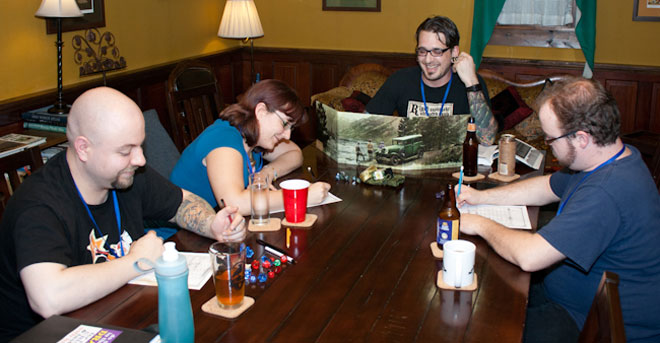In the GM’s Journal we will discuss all things role playing. From tips for running a successful table to reviews of various systems, you’ll find it here.
In the previous article we discussed a villain’s motivation and the importance of these characters to any story. In this post we are going to discuss how to display villainous power, how to make villains feel challenging without making them impossible to defeat, and what to do after they have been defeated.
There is an art to displaying a villain’s power. Margaret Thatcher quipped, “Power is like being a lady…if you have to tell people you are, you aren’t.” But how do we show our players that our villain is a force to be reckoned with? How do we make them take our villain as a serious threat? One way is by the company they keep. If he or she is giving orders to underlings made from living shadows, the players will probably rightly fear them. Even if all your villain does is sit on a crystal throne and stare menacingly at the players, they will take them seriously because they are calling the shots. Their status is established by commanding other powerful villains.
Another way to establish a villain’s power is to make the villain appear challenging. Now this does not mean that he must be made of living metal, have super powers, or have a magic sword. A display of brute strength works well, as does describing the villain as one who towers over others. However, power can also be established by showing the players that the villain is well connected. Perhaps the villain has the feds on the payroll, or perhaps they have ties to a particularly nasty shadow organization. You can also establish a villain’s power by making the villain hard to catch. The villain could live in a crystal spire that is difficult or deadly to get into. Making the villain notoriously elusive can also lead to some interesting ideas that may lead to capture.
It is easy to get so caught up in making our villains interesting that we forget that they have flaws and can fail too. Don’t make your villains all-powerful or too perfect. It is okay to make your heroes feel that defeating the villain will be difficult or even improbable. However, if your villain thwarts them at every turn the players will become frustrated. If the players come up with a good plan to foil your villain’s plot or stop them entirely, then let them have it. It will make the heroes feel fulfilled and can be the source of some great role-play. And remember if your villain is cunning he or she will probably not stop in the face of a setback.
The important thing here is to leave an Achilles’ heel. A fatal flaw that the heroes can exploit. Perhaps the villain underestimates the capability of our heroes. Alternatively the villains could believe themselves to be untouchable when in reality they are just as vulnerable as anyone else. Introducing a rival faction that the heroes can align themselves with can also be an option. Someone somewhere has to know something about your villain and his or her weaknesses.
The fate of most villains is eventual defeat. Whether by strength or guile, the players will likely cause the downfall of our villains. The question we must ask ourselves as Game Masters is: what happens next? Do we reveal to our players that our villain was just a lackey all along? Perhaps a mysterious letter is found in their possession commanding them to commit these atrocities. Or perhaps the sudden downfall of this villain creates a power vacuum which leads to the rise of a new villain or villainous group. Will there be a close friend or lover of the villain tracking down the players for revenge? Be ready for the next chapter after your characters successfully deal with the villain. Just because your main villain is defeated does not mean that the story is over!
In the next article we will discuss different types of villains, villainous descriptions, and a few tips and tricks on roleplaying.
Karington Hess is a lifelong gamer whose passions for hospitality and all things game-related led him to Ravenwood Castle, where he served as an Innkeeper before joining The Malted Meeple. When not pouring beers, crafting milkshakes, or teaching boardgames, Karington can be found behind the DM’s screen, weaving intricate stories for his fellow gamers.

